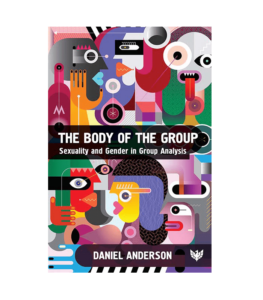 Dr Daniel Anderson is a consultant psychiatrist, group analyst, and medical psychodynamic psychotherapist. He works part-time at The Christie NHS Foundation Trust in the psycho-oncology service, and part-time in private practice in Manchester and Chester. He is a member of the Royal College of Psychiatrists, the Institute of Group Analysis, the United Kingdom Council for Psychotherapy, and the British Psychoanalytic Council. He was the medical director of The Retreat independent mental health hospital in York for three years until 2016.
Dr Daniel Anderson is a consultant psychiatrist, group analyst, and medical psychodynamic psychotherapist. He works part-time at The Christie NHS Foundation Trust in the psycho-oncology service, and part-time in private practice in Manchester and Chester. He is a member of the Royal College of Psychiatrists, the Institute of Group Analysis, the United Kingdom Council for Psychotherapy, and the British Psychoanalytic Council. He was the medical director of The Retreat independent mental health hospital in York for three years until 2016.
His new book – The Body of the Group: Sexuality and Gender in Group Analysis – examines sexuality, gender, and training from a group analytic perspective that bridges into feminist theory, queer theory, and education theory.
Sexuality and gender are arguably invisible (or at least less visible) products of identity. The body, generally hidden under clothing, reveals itself through contour, behaviour, and imagination. They require an extra effort within language to state a position or ‘come out’ to use a colloquialism. This new book will specifically address sexuality and (trans)gender in relation to group analysis but its scope encompasses all mental health clinicians and their training courses.
As clinicians, none of us are beyond politics and history. We are as prone to prejudices such as homophobia and transphobia, consciously and unconsciously, as anyone else. The problem is that counselling and psychotherapy, and group analysis specifically, are discursively bound to historical accounts of the relationship between homosexuality and classical psychoanalysis. This results in group analysis historically referring to non-normative sexualities and genders as being reduced to perversion and developmental arrest, or grossly reduced to a singular category of identity. This book asks the question; what is the legacy of this impact?
Much has been written about the apparently pathological nature of the ‘homosexual’. Very little has turned this around to consider the pathology-inducing nature of the discourse within certain schools of psychoanalysis surrounding the ‘homosexual’ and the ‘trans person’ that creates the subject. The ‘Conservative Developments’ (1948–1963) saw a proliferation of psychoanalytic writing on homosexuality that “was characterized by an increasingly moralistic tone and a growing emphasis on conventional social values” (Lewes, 1995, p.128). One of the most prolific writers was Edmond Bergler whose blatant attack on homosexuality concluded that “… there are no healthy homosexuals” (Bergler, 1956, p.9, original italics).
For group analysis, which thankfully has never had its own theory of psycho-sexuality, this absence permits a potentiality to dislocate the body from gender, desire, sex and sexuality by virtue of the fact that the politics of such terms were (arguably, at least directly) not part of its inception. For example, group analysis was conceived within aggression, trauma, and social displacement at the end of World War II. Psychoanalysis began with Anna O. and sexuality. I caution against idealising group analysis, however, in that it does fail with sexuality by its reification of sexuality and gender as identities through which the self can be organised. Nonetheless, the potential emphasis on the body within group analysis enables a view of sexuality that cannot be localised within the one body but can also be within the collective body of the group.
Feminist queer theory has taken such discussions away from categories of identity and group analytic theory is well-positioned to continue this dialogue alongside the analytic therapies. As I argue in the book, it is the embodiment of group analytic theory within a contained (a)gendered and (a)sexualised analytic group that has profound implications for sexuality and gender as enabled by the analytic group’s potential to simultaneously contain multiple and often contradictory thoughts and feelings. Recent discussions within the field of group analysis have also rightly sought to engage its practice with contemporary political discussions that surround identity.
I do not frame my project within this book as if identity is the problem to be solved, but it does come with consequences that can be equally problematic. It is important to reiterate that the movement beyond identity and being ‘non-normative’ are issues that are not solely located within ‘non-normative’ individuals. As mentioned, ‘non-normative’ sexualities must not be, in group analytic terms, the location of disturbance (or difference as my preferred term) and, as such, even the category of heterosexuality must be held as equally problematic. However, moving beyond identity means moving towards a shifting, embodied and fantasised experience of sexuality; erotically and reproductively.
Dr Daniel Anderson

